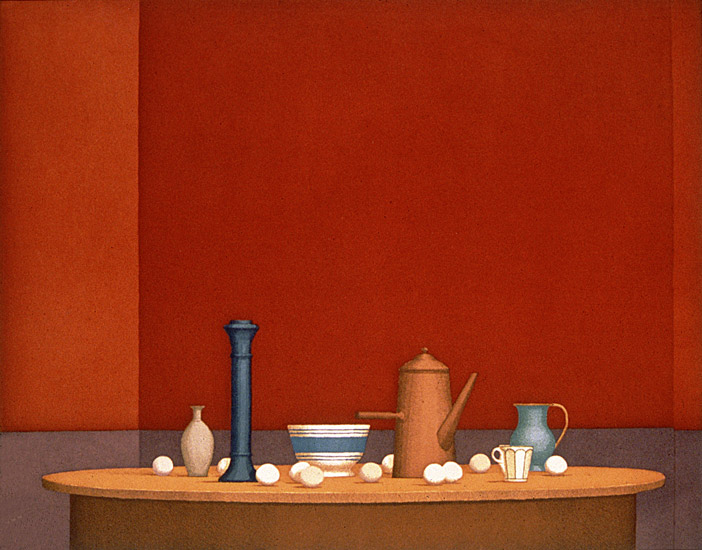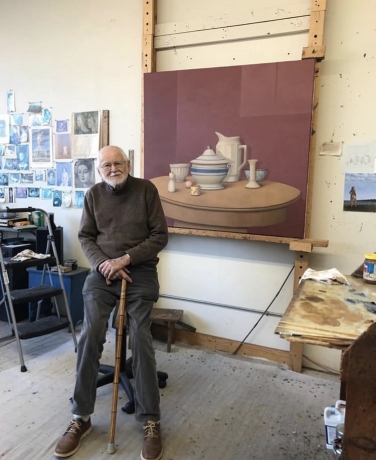
I was entranced by William Bailey’s recent exhibition of paintings and works on paper at Robert Miller Gallery. Bailey is known for his luminous, exactly rendered still lifes, in which assorted jars, bowls, pitchers and eggs are placed on a table top in an infinite variety of subtly different arrangements. Usually the objects are painted head-on in a shallow space, but once in a while Bailey varies this formula, as in “Monte Rotondo,” in which they are placed in a corner and shown from above, and the effect resembles that of a thunderclap in a quiet room. People who don’t get Bailey really don’t get him, and I used to be one of them—I thought he was a slick American knockoff of Giorgio Morandi—but this show opened my eyes. Now I recognize him for the modern master he most certainly is. In the Church of Art, there is always room for adult converts.

As I once remarked about the experience of listening to the music of Gabriel Fauré, “it is as though you were talking with a shy person whose voice is only audible in a quiet room. If the room is too noisy—or if you insist on doing all the talking—then you will hear nothing at all.” But for all the noise in the crowded, clamorous room that is postmodern American art, there are still plenty of people who are capable of “hearing” and understanding what Bailey has to say…and marveling that such eloquent statements continue to be made at a time when there are (in his rueful words) “fewer and fewer people who can see painting.” Yet the paintings are there in abundance, waiting patiently to be seen.
I met Bailey on opening night and, sure enough, I was struck by his modesty and quiet sweetness. I suppose he knew exactly how good he was, but you would never have guessed it from his manner. Though our paths never crossed again, I have never forgotten our sole encounter, of which I am reminded each time I go into the kitchen and look, sometimes casually but more often with close, loving attention, at Piazza Rotonda.
* * *
The New York Times‘ obituary is here.